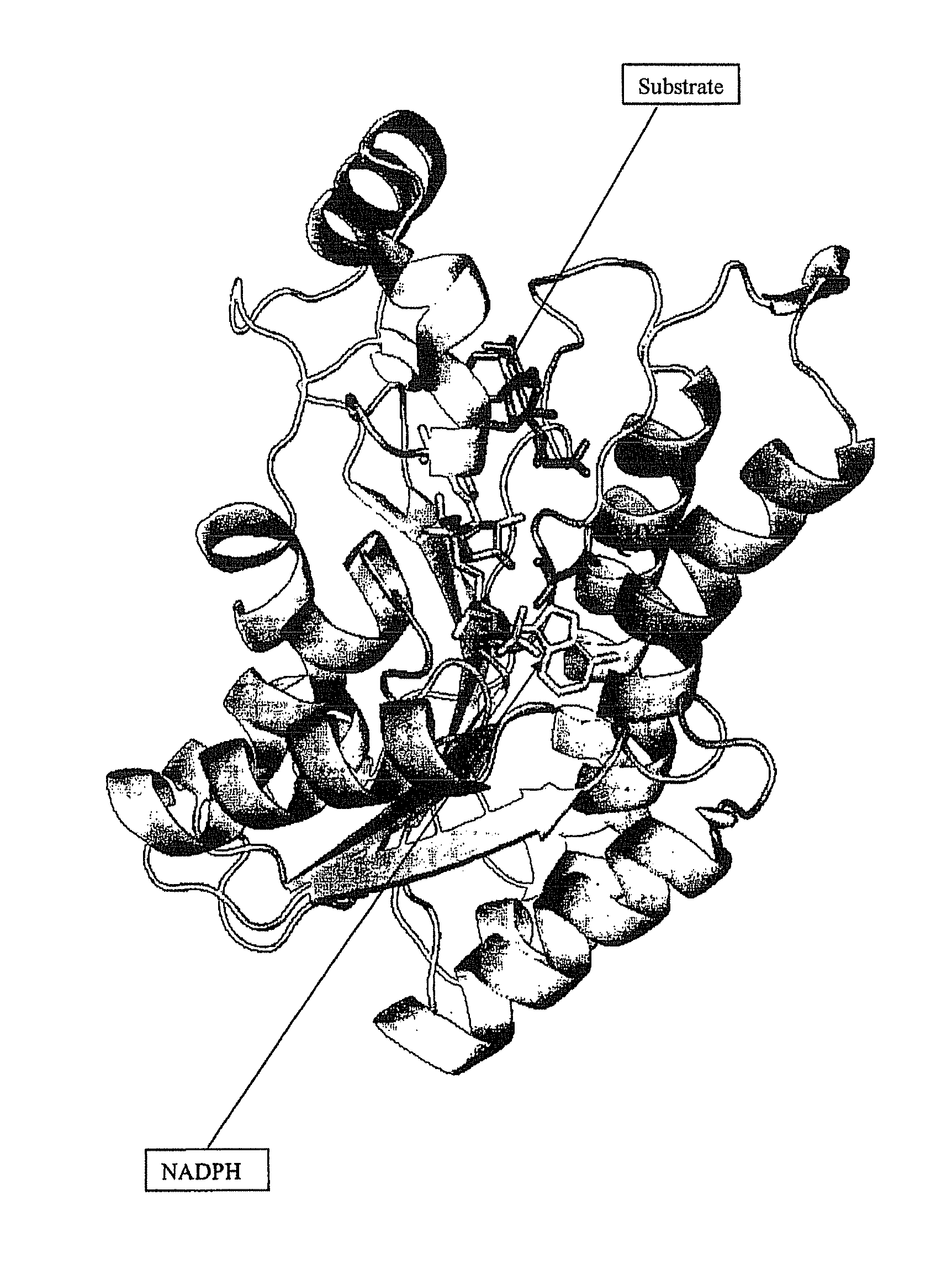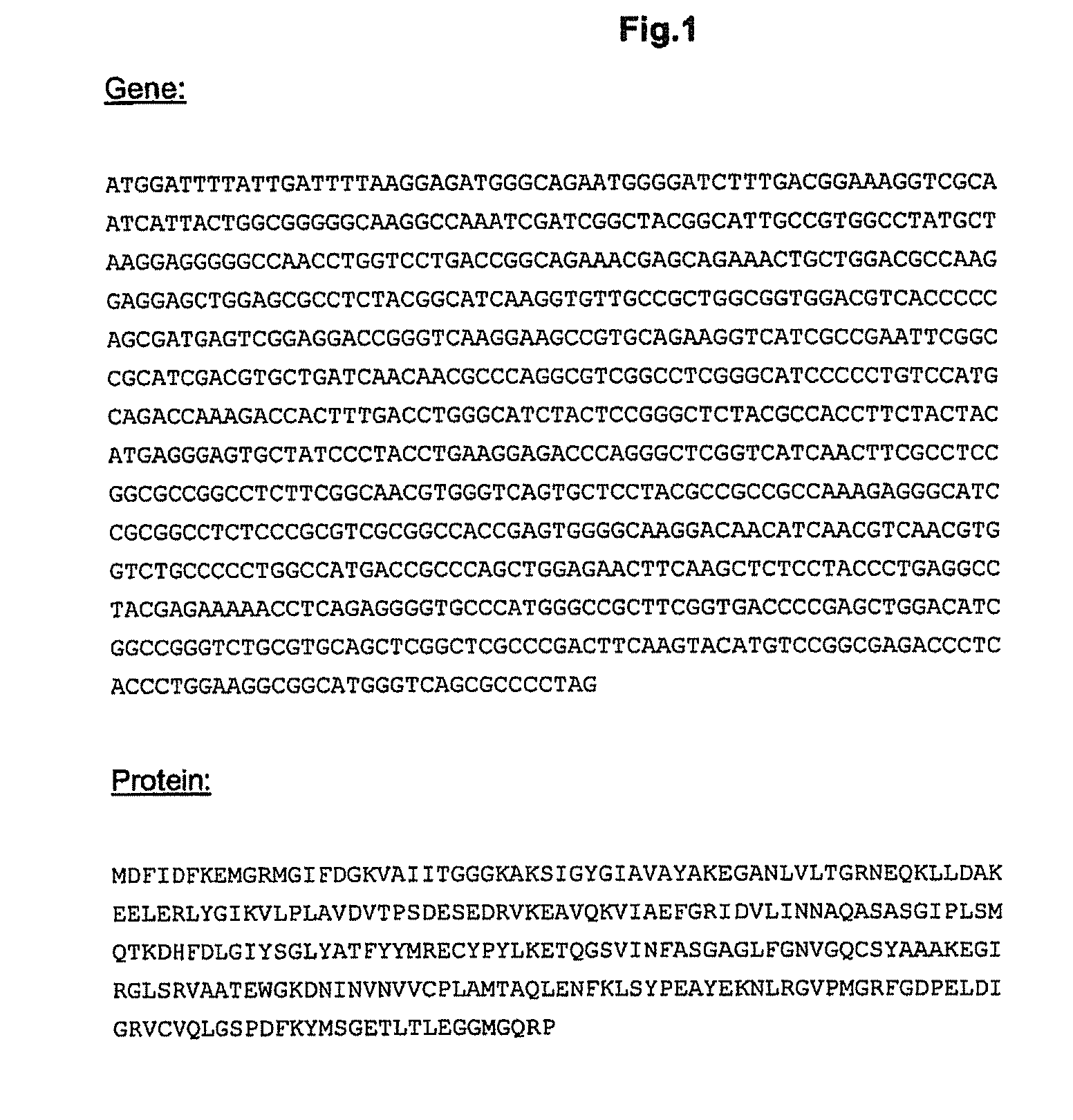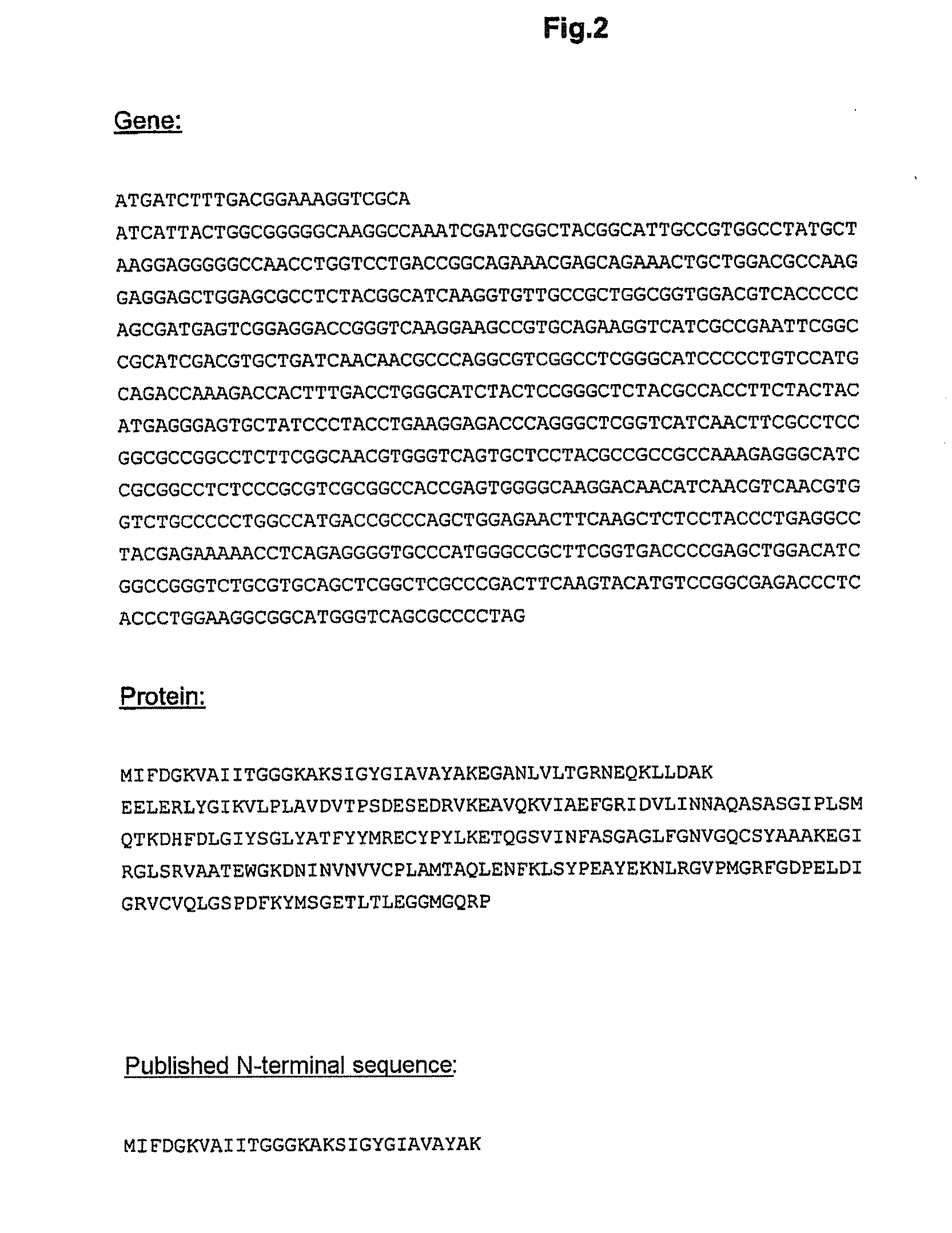Novel 12 alpha-hydroxysteroid dehydrogenases, production and use thereof
a technology of alpha-hydroxysteroid and dehydrogenase, which is applied in the field of alpha-hydroxysteroid dehydrogenases, production and use thereof, can solve the problems of difficult access to industrially utilizable amounts of enzymes, difficult and costly industrial production, and difficulty in synthesis of 12-hsdh in the synthesis of pharmaceutical intermediates
- Summary
- Abstract
- Description
- Claims
- Application Information
AI Technical Summary
Benefits of technology
Problems solved by technology
Method used
Image
Examples
example 1
Sequence Homology Investigations
[0253]In order to obtain access to the 12α-HSDH sequence, the genome of Clostridium sp. group P strain 48-50 DSM 4029 was sequenced. The search both for the published N-terminal sequence and the search for the motif “LVNN” in all open reading frames (ORFs) did not lead to the sequence of the gene coding for 12α-HSDH.
[0254]It was possible only by sequence homology comparisons to identify a gene that contained the published partial sequence information in a modified form. The comparisons were carried out with TBLASTX (Tatusova and Madden (1999) FEMS Microbiol Lett 174 (2), 247-250) and under the following conditions:
[0255]Open gap: 5
[0256]Extension gap: 2
[0257]gap x_dropoff: 50
[0258]expect: 10.0
[0259]word size: 11
[0260]The standard conditions of http: / / www.ncbi.nlm.nih.gov / blast / Blast.cgi?PAGE=Translations&PROGRAM=tblastx&BLASTPROGRAMS=tblastx&PAGETYPE=BlastSearch&SHOWDEFAULTS=on#i were used; parameters are to be found there under “Algorithm parameters”...
example 2
Amplification of the 12α-HSDH Gene and Expression of 12α-HSDH
[0264]1. Amplification
[0265]The following primers were used for this:
Forward long (long enzyme version, NdeI cleavagesite):(SEQ ID NO: 14)GGTATTCCATATGGATTTTATTGATTTTAAGGAGATG.Forward short (short enzyme version, NdeI cleavagesite):(SEQ ID NO: 15)GGTATTCCATATGATCTTTGACGGAAAGGTCGC.Primer reverse (BamH1 cleavage site)(SEQ ID NO: 16)CGGGATCCCTAGGGGCGCTGACCC.
[0266]The target gene was amplified by PCR using Pfu polymerase.
[0267]As a template, the genomic DNA of Clostridium sp. group P strain 48-50 DSM 4029 (29.4 ng / μl) was used, of which 1 μl was employed. For amplification, 1 μl of the Pfu polymerase was used. The buffer used was Pfu buffer (10× with MgSO4) (Fermentas, St. Leon-Rot). In each case 1.5 μl of forward and reverse primer (10 μM) were employed, and 2 μl of deoxynucleotide triphosphate (20 μM). The batch was adjusted to 50 μl with RNase-free water. The reaction was carried out in the Eppendorf thermocycler. The PCR b...
example 3
Preparative Synthesis of 12-ketochenodeoxycholic Acid from Cholic Acid
[0277]The expressed enzyme (short version) was employed in combination with ADH t (Codexis, Jülich) for the preparative synthesis of 12-ketochenodeoxycholic acid. For this, 500 ml of cholic acid (400 mM in potassium phosphate buffer (50 mM, pH 8.0), 10% acetone), 0.25 mM NADP+, 2000 U of 12α-HSDH_short from E. coli BL21 (DE 3) (cf. above Example 2) and, for cofactor regeneration, 550 U of ADH t (from Thermoanaerobacter sp., Codexis, Jülich were mixed in a 1 l round-bottomed flask. The reaction was carried out at RT, with continuous stirring and reflux cooling. After 27 h, a further 550 U of 12α-HSDH and 138 U of ADH t were added and the mixture was incubated for a total of 117 h. During the reaction, the photometric absorption was determined at 340 nm and 1 ml samples were removed for monitoring the course of the reaction, which were stopped with 100 μl of hydrochloric acid (1 M) and evaporated or extracted in et...
PUM
| Property | Measurement | Unit |
|---|---|---|
| temperature | aaaaa | aaaaa |
| temperature | aaaaa | aaaaa |
| temperature | aaaaa | aaaaa |
Abstract
Description
Claims
Application Information
 Login to View More
Login to View More - R&D
- Intellectual Property
- Life Sciences
- Materials
- Tech Scout
- Unparalleled Data Quality
- Higher Quality Content
- 60% Fewer Hallucinations
Browse by: Latest US Patents, China's latest patents, Technical Efficacy Thesaurus, Application Domain, Technology Topic, Popular Technical Reports.
© 2025 PatSnap. All rights reserved.Legal|Privacy policy|Modern Slavery Act Transparency Statement|Sitemap|About US| Contact US: help@patsnap.com



